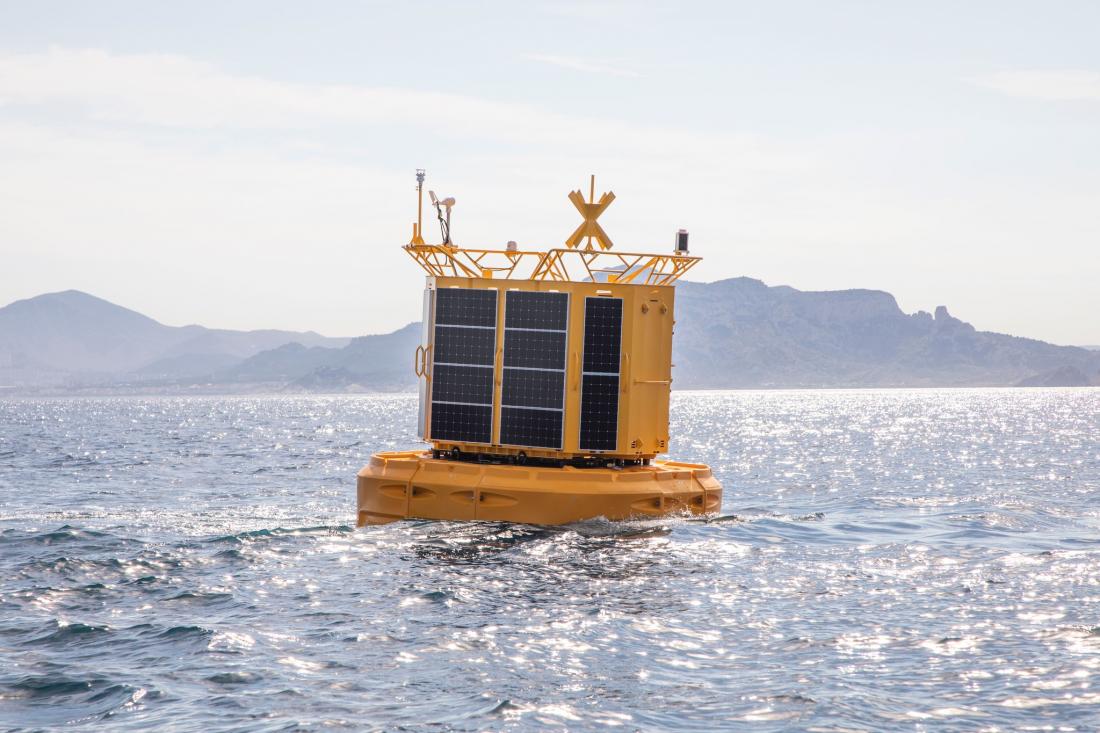Funded by the European ERC Consolidator grant and led by Sophie Bonnet, MIO, Director of Research at the IRD, the HOPE project aims to study the capacity of tropical oceans to sequester CO2.
On 2 March 2024, a state-of-the-art intelligent buoy measuring five metres in diameter and equipped with innovative sensors that communicate with each other and with land will be deployed in the South Pacific, off the coast of New Caledonia. This device will simultaneously sample the ocean surface and depth every four hours for four years, and transmit its data (biodiversity, chemistry, physics) in real time to oceanographers on land. This is a technological feat that has never been equalled in the field of oceanography, opening up new perspectives in our understanding of ocean-climate links.
Tropical and subtropical oceans cover ~60 % of the global ocean surface. Until recently, they were considered to be inefficient at trapping CO2 because they are nutrient-poor zones. However, these vast regions are home to a particular type of plankton called "diazotrophs", which fertilise the surface ocean with nutrients. These micro-organisms stimulate the marine food chain and CO2 sequestration via an alternative biological carbon pump, the importance of which was highlighted by the IRD in a recent study.
How powerful is this alternative carbon pump? Could these marine micro-organisms absorb more CO2 than we think? And so help mitigate climate change? This is what the HOPE project "How do diazotrophs shape the ocean biological carbon pump?" will explore over 4 years, combining approaches at the interface between microbial oceanography, geochemistry and autonomous sensor technology using the intelligent profiling buoy.
Today's ocean is becoming 'tropicalised' and the role of this alternative pump could become predominant in the ocean of the future. The results of the HOPE project could thus modify the climate models used by the experts of the Intergovernmental Panel on Climate Change (IPCC) and shape the ocean of tomorrow.
About the intelligent profiling buoy
The intelligent profiling buoy is equipped with high-tech sensors and automatic controllers, some of which were developed specifically for the HOPE project. Six other 700 m long lines equipped with instruments flank the buoy, the whole representing an oceanographic measurement system over an area of more than 2 km2 in the middle of the ocean, i.e. one of the most instrumented sites in oceanography to date.
The whole system will measure the high-frequency variability (on an hourly and daily scale for several years) of plankton biodiversity, associated carbon fluxes and currents, simultaneously at the surface and at the bottom of the ocean. These data will help to shed light on the complexity of the processes involved in controlling carbon sequestration in the ocean.
_________________________________________________________________________________________________________________________________________________________
The buoy will be assembled between 22 and 29 February at the Quai des Scientifiques in Nouméa, New Caledonia.
It is due to be deployed in the ocean on 2 March off the Aboré reef in New Caledonia, using three oceanographic vessels: the Cyathea (a SORASORECAL tug), assisted by the Antéa (a vessel in the French Oceanographic Fleet operated by Ifremer) and the Archamia (an IRD vessel).
This high-tech platform, 8.5 metres high and 5 metres in diameter, is self-sufficient in energy, powered by solar panels and wind turbines. It's an innovation that could revolutionise oceanography, providing a response to the challenges of decarbonising practices and making detailed, complex observations of the ocean without human intervention, with data transmitted in real time to land, which will ultimately help to improve climate models.
__________________________________________________________________________________________________________________________________________________________
Project Hope
Researcher contact: Sophie Bonnet, oceanographer at the MIO, director of research at the IRD Hope project website LinkedIn and Facebook
Press contacts
IRD Press Office IRD New Caledonia





